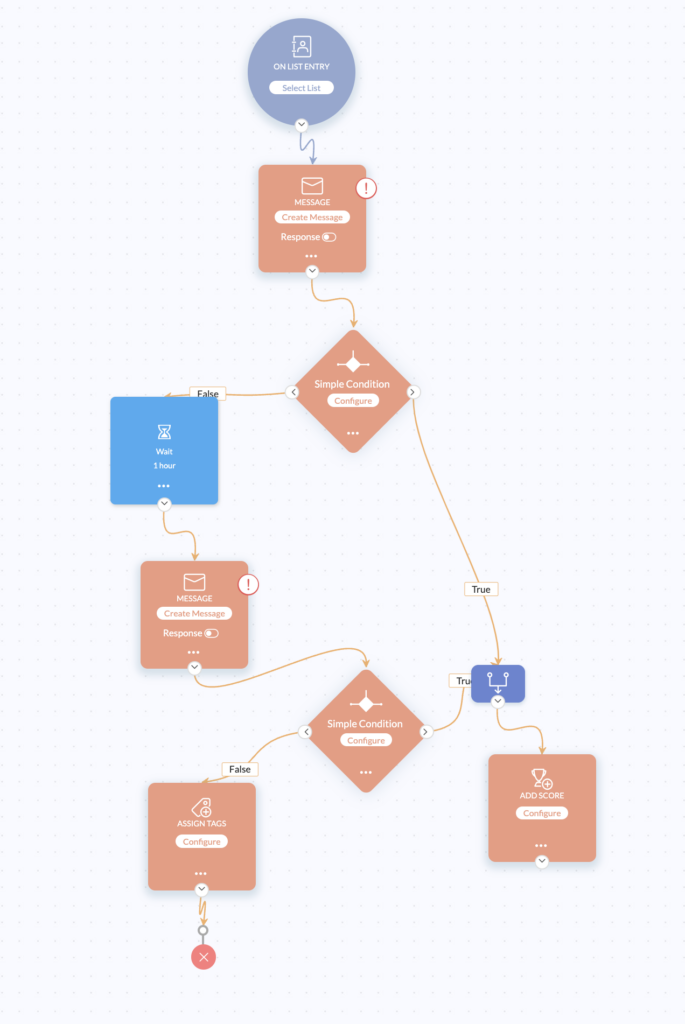As marketing strategies evolve, businesses increasingly face challenges in delivering personalized messages to their target audiences.
Email marketing can be a powerful tool.
But as a manual process, messaging and segmentation is difficult.
Here’s why:
- Customer data is often limited and doesn’t include details that can meaningfully direct messaging, like preferences or past interactions.
- Demographic information may only be general and at a company level, rather than the individual people and job titles in the company.
- A common obstacle with manual email sends is that while other detailed information may be available, like leads collected from trade shows, it’s typically housed in siloed spreadsheets that email systems can’t leverage.
Email marketing automation bridges this gap by enabling timely, relevant communication based on detailed customer data and behavior. It also enables more strategic, effective connections with your customers, such as:
- Delivering the right message at the right time to the right customer
- Reducing email fatigue
- Offering more relevant content
- Personalizing messages
What is Email Marketing Automation?
Email marketing automation utilizes specialized software to automate the delivery of targeted emails to specific customer segments at optimal times, streamlining your marketing efforts and maximizing engagement. There are several platforms for email marketing automation, such as HubSpot or Zoho.

Valuable Functionality Out of the Box
Most email marketing automation platforms feature intuitive drag-and-drop workflow builders, simplifying the setup of customer journeys and enhancing strategic planning.
Workflow visuals make it easy to plan your customers’ journey to get to the intended conversion.
You can get started quickly by choosing one of many email templates, or you can upload HTML for a custom layout. You can then use many tools to personalize messaging quickly and easily. Tools often include A/B testing, segmentation by geography, polls, surveys, and event registration links.
Getting Started With Email Marketing Automation
As with any new marketing initiative, it’s smart to start small and add more bells and whistles as your experience, data, and findings grow.
- Start with a simple nurture campaign. Begin by segmenting your customers based on specific criteria, such as company size or location, and align your email campaigns with a compelling value proposition that resonates with these segments.
- Build a workflow triggered by recipients’ behaviors. For example, if someone opens the email but doesn’t convert, you can set a follow-up email for a specific timeframe to keep your business top-of-mind, knowing that the person showed interest. Or if someone doesn’t open the email, you can set a follow-up email for a specific timeframe and use a different subject line to encourage the click-through.
- Pivot and adjust as you gain insights from email sends. As your campaign matures, you can expand the journey or add new campaigns to test assumptions you’ve learned from your data.
Benefits of Email Marketing Automation
Behavior-driven messaging: Email marketing automation software enables businesses to tailor their communications based on customer interests and behaviors, eliminating guesswork and increasing relevance.
- You can also use the behaviors to “score” leads; higher-scoring leads can be passed on to business development teams for more personal follow-up.
- The longer the campaigns run, the more robust your data becomes. These learnings can be applied in different channels as well, like social and search marketing.
Focus more on content than operations: Once you have the workflows set up, campaigns run without much attention. It allows for an “always on” nurture funnel. The software continues to do the heavy lifting and you can focus efforts on optimizing campaigns to improve performance.
Quick pivots: Automation also provides flexibility to be able to react/test quickly to findings and new directions.
Reporting: Most platforms include real-time dashboard reporting with details on emails sent, opened, interactions with the content, and other actionable data. This reporting can often integrate with other systems, like CRMs and Looker Studio.
Considerations for Email Marketing Automation
If email marketing automation seems like a good fit for your business, there are a few things to consider:
- Cost: The cost ranges between different platforms, the number of contacts, the package selected (there are many other services offered by most of these platforms), and other variables. Some platforms offer a free plan, others start around $20 a month, while others can go up to $800 for multiple components.
- Available data: In compliance with the CAN-SPAM Act, email-sending platforms have strict rules on permissions to send marketing emails, so you’ll need to be able to show that your list of contacts is authentic. You’ll also need to go through the steps to authenticate your sender domain.
Email marketing automation can elevate your marketing strategy, delivering personalized, timely, and relevant communications to your audience. Contact Blue Flame Thinking to discover the ideal platform for your business and start transforming your email marketing today.


